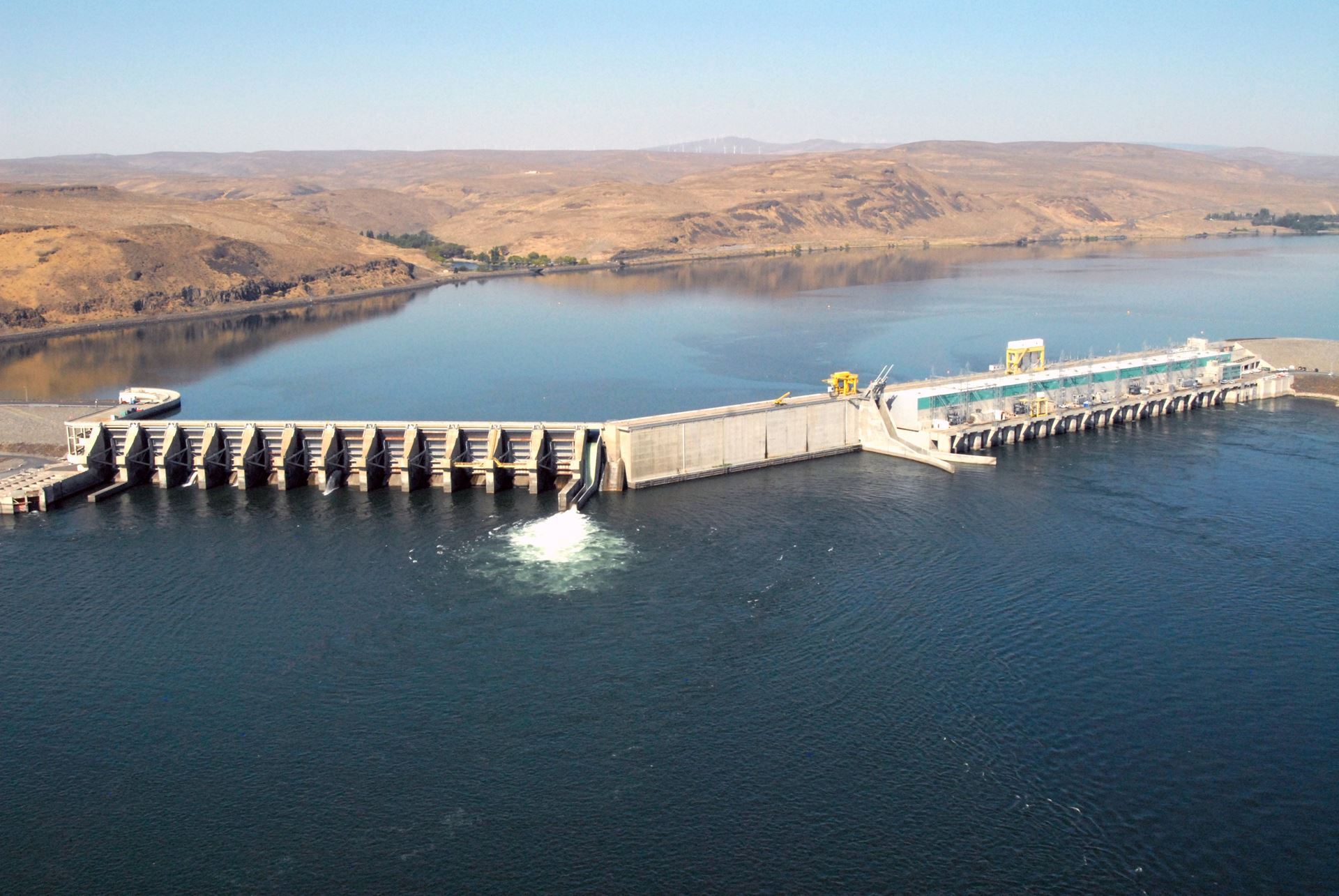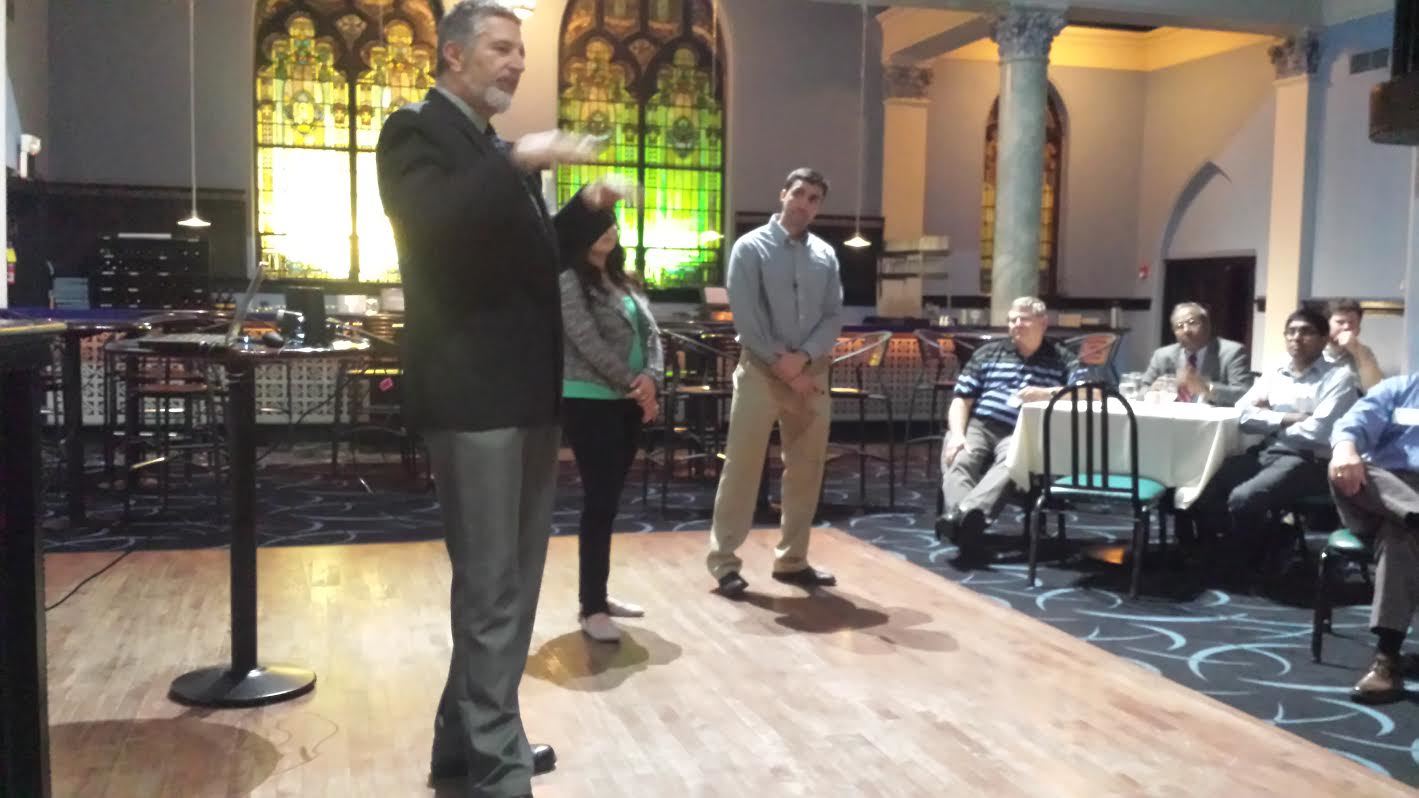By Alex Potter-Weight
 More than 50 ASCE members and guests gathered on November 19th at Cefalo’s Banquet and Event Center for the Pittsburgh Geo-Institute’s monthly dinner meeting and technical presentation, titled “Fixing a Crack in the Wanapum Dam”. Dr. Rick Deschamps, Vice President of Engineering for Pittsburgh-based Nicholson Construction Company, presented the fascinating case history of a large dam remediation project that Nicholson performed in Washington State. The presentation also included first-hand accounts of the construction from project engineers, Abigail Stein and Nathaniel Witter.
More than 50 ASCE members and guests gathered on November 19th at Cefalo’s Banquet and Event Center for the Pittsburgh Geo-Institute’s monthly dinner meeting and technical presentation, titled “Fixing a Crack in the Wanapum Dam”. Dr. Rick Deschamps, Vice President of Engineering for Pittsburgh-based Nicholson Construction Company, presented the fascinating case history of a large dam remediation project that Nicholson performed in Washington State. The presentation also included first-hand accounts of the construction from project engineers, Abigail Stein and Nathaniel Witter.
The Wanapum Dam is on the Columbia River in Washington State, with a spillway 820 feet long and a hydroelectric capacity of nearly 1,100 Megawatts. In February of 2014, after more than 50 years in service, a fracture was discovered on the upstream side of the concrete spillway. The fracture ran the entire 65-foot width of one of the monoliths and was up to two inches wide. After the dam was immediately lowered, a subsequent investigation showed that the primary cause of the fracture was an underestimation of the hydrostatic forces, resulting in an insufficient pre-construction design. Dr. Deschamps praised all of the parties involved with the investigation for readily admitting the miscalculation, which allowed for an efficient and transparent remediation process.
Nicholson Construction was brought into the project to repair the crack and prevent future damage so that the dam could be put back into service. The first step in the repair work was coring of the dam to map the existing cracks. This took place from a small gallery within the dam and the results of the exploration indicated that the problem was widespread as cracks were found within all of the monoliths. Next, these cracks were grouted with either cement or chemical treatments. The construction from the gallery also included the installation of uphole drains to relieve and monitor hydrostatic pressure. Following the mapping and grouting from the gallery, construction continued from atop of the dam crest and spillway. From there, large steel tendon and bar anchors were installed, each with a capacity of over 1,200 tons. These anchors were drilled into the underlying bedrock and firmly locked the dam in place. A final, challenging piece of the construction involved the installation and testing of the remaining bar anchors underwater, by divers.
 Ultimately, the complex repair work was completed safely and on schedule, allowing the county public utility department to raise the water level back to its previous levels. This raising of the water level not only returned the hydro-electric dam to its full operating capacity but also prevented depletion of the salmon population that migrates past the dam by way of a fish ladder.
Ultimately, the complex repair work was completed safely and on schedule, allowing the county public utility department to raise the water level back to its previous levels. This raising of the water level not only returned the hydro-electric dam to its full operating capacity but also prevented depletion of the salmon population that migrates past the dam by way of a fish ladder.
Dr. Deschamps has given this presentation to different organizations since the completion of the project, including the Chicago Geo-Institute. Hosted by the Geo-Institute Chapter of the ASCE Pittsburgh Section, the event included a social hour for exchanging professional insight and a buffet dinner. Attendees earned 1.0 PDH hour for this presentation.
